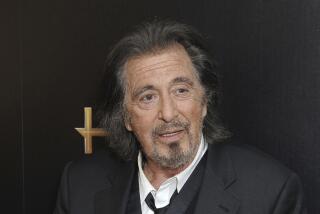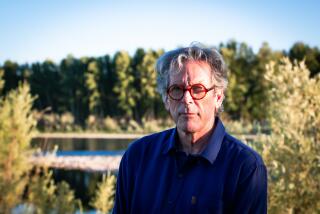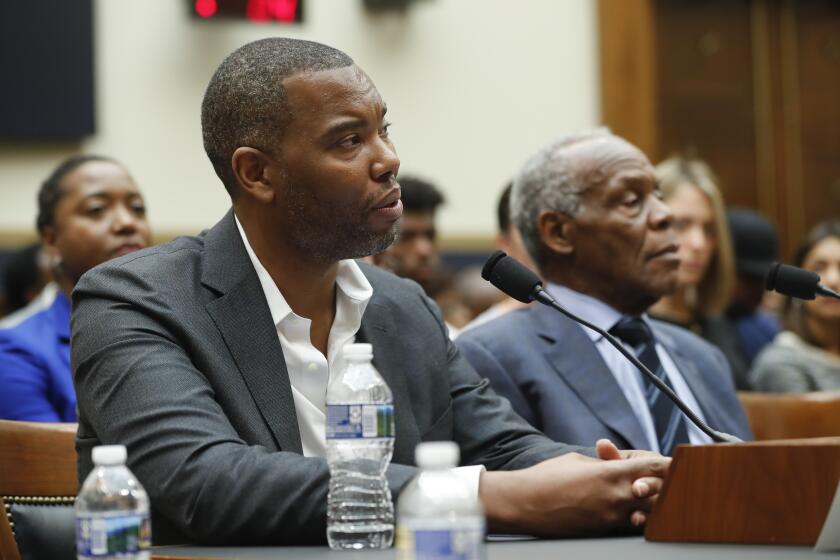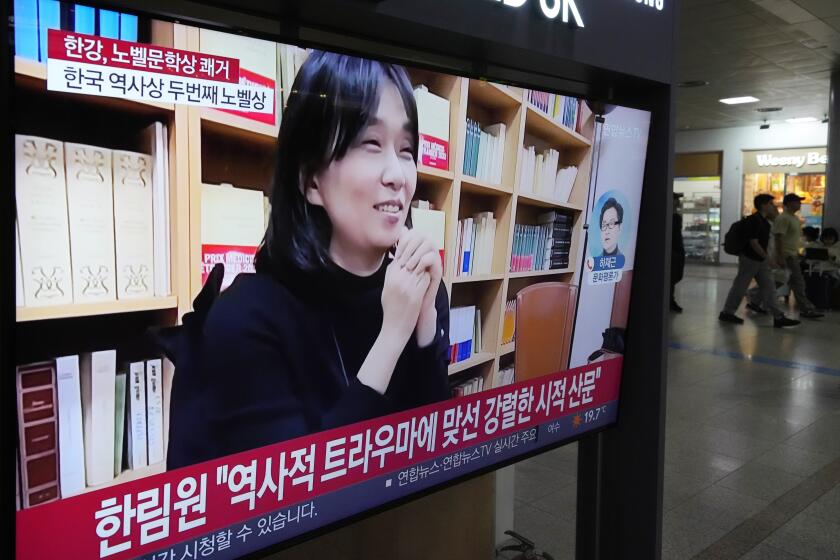Cold War Treachery Brought Back to Life
It’s the spring of 1945, and in a jerry-built compound on a mesa in Los Alamos, N.M., the scientists assembled for the top-secret Manhattan Project are feverishly working to build the first atomic bomb. When a security officer is found murdered in nearby Santa Fe, the U.S. government can take no chances.
Michael Connolly, a former newspaperman working for Army intelligence, is sent to Los Alamos, not so much to solve the murder case as to find out whether the secrets of the bomb’s construction have been stolen.
The circumstances of the killing suggest that the dead man was a closet homosexual--a security risk in itself. Later, Connolly comes to suspect that he may have been killed by spies funneling information to our erstwhile ally and future enemy, the Soviet Union.
This second theme--that the Cold War was beginning before World War II ended; that many Americans longing for a return to their peacetime lives would instead be trapped in a perpetual wartime atmosphere of secrecy, paranoia and witch hunts for homosexuals and communists--is what makes Joseph Kanon’s first novel more than just a period mystery.
Kanon, a veteran publishing executive, must have done prodigious research for “Los Alamos,” because he brings both the physical and the psychological details of that time and place to vivid life.
In one sense, it’s a distant and exotic world. Half a century ago, gay liberation was unimaginable. Santa Fe was a sleepy village, not a tourist mecca. Air conditioning was a rarity. Gasoline and tires were rationed. People traveling cross-country had to take the train. The world’s most brilliant physicists scribbled their calculations on blackboards with chalk, changing the terms of human life forever without the aid of a single computer.
In another sense, it’s the same world those of us who grew up with the Cold War have always known: layered and treacherous. The deeper Connolly burrows into the murder case, the more he penetrates the moral ambiguities of life on “The Hill,” as the Los Alamos compound is called.
Connolly himself isn’t exempt. He falls in love with Emma Pawlawski, the British-born wife of a Polish scientist--then finds himself having to use her, in ways repugnant to both of them, to solve the case.
It must be said, though, that “Los Alamos” has a dead spot in the middle of it, and that dead spot is Connolly. The story doesn’t unfold as it does because of the kind of man Connolly is--bright, glib, brash, indefatigable; he’s the way he is so the story will unfold as it does. We can tell.
In contrast, Emma is a memorably seductive and conflicted character. Among the historical figures Kanon appropriates for the novel, Gen. Leslie Groves, who built the Pentagon and oversaw the Manhattan Project for the Army, is a one-dimensional blusterer, but J. Robert Oppenheimer, the project’s civilian chief, is fascinatingly complex.
Oppenheimer, whose loyalty will be questioned after the war, pushes the project along past V-E Day even though the Nazis--whose atrocities have given the Allies “permission” to build the bomb--have been defeated. “Do you think,” he asks Connolly, “we’ve come this far not to build it?” After the first test in Alamogordo, N.M., is a success, he confides to Connolly that a decision has been made in advance: Two bombs will be dropped on Japan, regardless of the effects of the first one.
Kanon’s tormented Oppenheimer foresees that his colleagues will remember only the terror of the test blast and forget that in building the bomb they were having “the time of our lives. It won’t be convenient to remember that. That we enjoyed doing it.”
“Los Alamos,” of necessity, doesn’t deal with what the bomb did to those who lost the war. For that part of the picture, you’re advised to read Masuji Ibuse’s Hiroshima novel “Black Rain” (Kodansha, 1969). But it does persuasively describe the shadow it cast over us, the winners.
More to Read
Sign up for our Book Club newsletter
Get the latest news, events and more from the Los Angeles Times Book Club, and help us get L.A. reading and talking.
You may occasionally receive promotional content from the Los Angeles Times.







